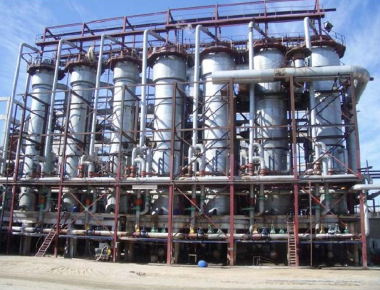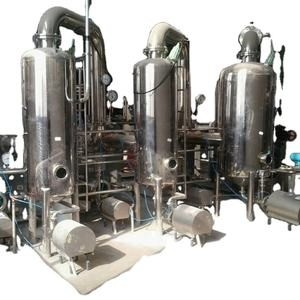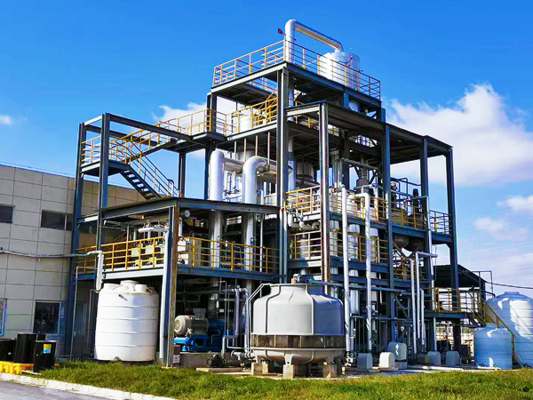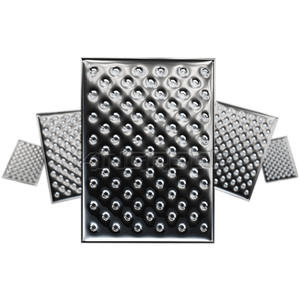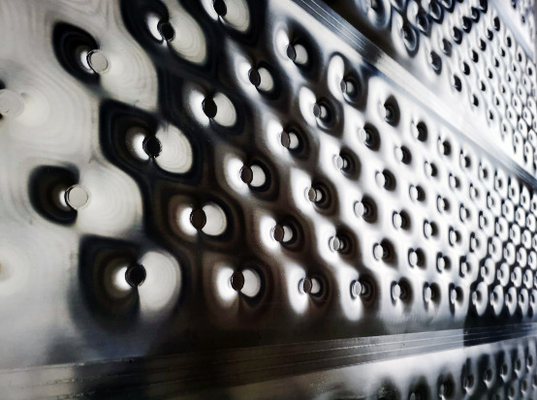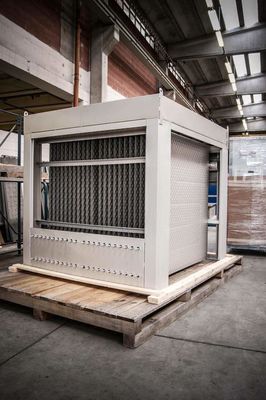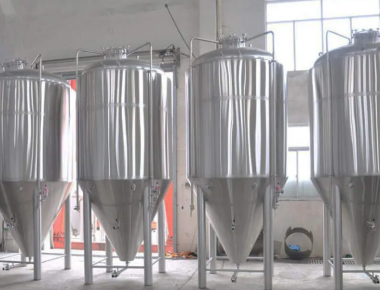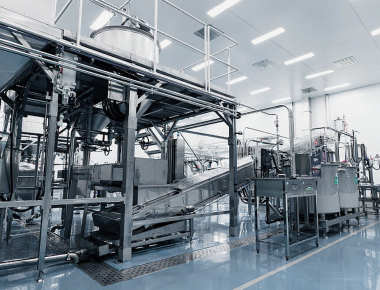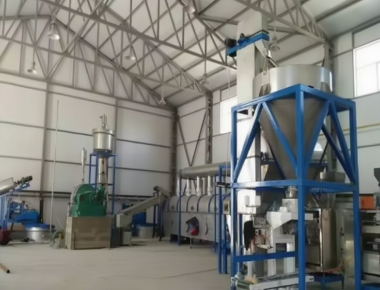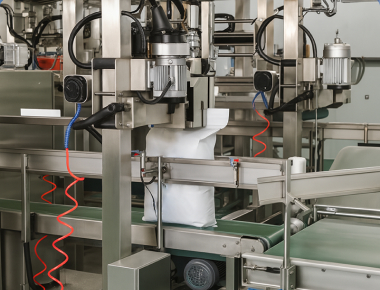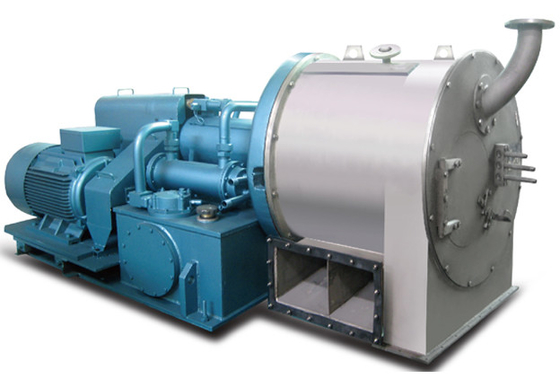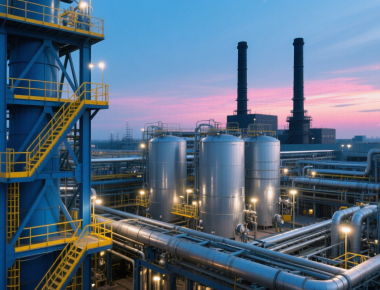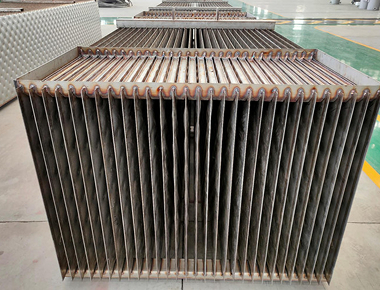Salt Crystal Refining Evaporation System Plant Line For Table Salt

Produce high-purity edible salt with a continuous, energy-efficient line that integrates brine purification, MVR evaporative crystallization, centrifugation, drying, sizing, iodization, and packaging.
- Food-grade purity: stable NaCl content with low moisture and insolubles
- Low operating cost: minimal fresh steam; mostly electric MVR duty
- Uniform crystal size: controlled nucleation/growth for consistent grain distribution
- Long campaigns: hygienic design with full CIP for reduced downtime
Why Choose MVR for Refined Table Salt?
MVR compresses secondary vapor and recycles it as the heating medium, recovering latent heat and cutting utilities while maintaining crystal quality and throughput. Designed for food and chemical plants seeking predictable OPEX and stable output.
Energy Efficiency
Typical electric consumption ~15-40 kWh per ton of water evaporated (design-dependent), with very low fresh steam after start-up.
Crystal Quality
Forced-circulation crystallization with controlled supersaturation delivers tight size distribution and high clarity.
Food-Grade Compliance
316L/duplex materials, smooth finishes, drainability, CIP validation, and documentation to support HACCP/ISO programs.
Process Overview -- Refined Table Salt

- Brine Make-Up & Purification: raw/rock/solar salt dissolving -> chemical softening (Ca/Mg removal) -> clarification/filtration -> polishing.
- Preheat & Deaeration: ensure stable ΔT and reduce corrosion/foaming.
- MVR Evaporative Crystallization: compressed vapor provides heat; slurry density and residence time govern crystal growth.
- Solids Recovery: peeler/scroll centrifuge for mother-liquor separation; liquor is recycled.
- Drying & Sizing: vibratory/fluid-bed drying -> sieving/polishing to target grain bands.
- Iodization & Additives: inline dosing and homogeneous mixing; optional anti-caking.
- Packing: 1 kg retail to 25-50 kg bags or bulk, with metal detection and weight checks.
Key Components
- MVR forced-circulation evaporator/crystallizer with circulation pump
- High-speed centrifugal/turbo or Roots compressor (duty-matched)
- Vapor-liquid separator, main heater, preheater, condenser & vacuum system
- Brine purification skid (dissolver, softening, clarification, filters)
- Peeler or pusher centrifuge; vibratory/fluid-bed dryer
- Sieves/polisher; iodization and anti-caking dosing skid
- Instrumentation (T/P/flow/conductivity/level) and PLC/HMI/historian
- CIP skid with validated procedures

Performance & Sizing
Design inputs: raw salt/brine quality, target NaCl grade, grain size bands, campaign length, utilities, ambient, and hygiene requirements.
| Parameter |
Typical Target / Range* |
| NaCl (dry basis) |
≥ 99.2% (up to 99.7% with enhanced purification) |
| Moisture (final product) |
≤ 0.2% (grade-dependent) |
| Insolubles |
≤ 0.05% (with proper brine polishing) |
| Crystal size options |
Fine 0.2-0.5 mm; Table 0.5-1.2 mm; Coarse 1.2-2.5 mm |
| Line capacity (product salt) |
5-500 t/day (modular trains) |
| Electric use (MVR) |
~15-40 kWh per ton of H₂O evaporated |
| Campaign length |
≥ 10-20 days between CIP (feed-dependent) |
*Performance depends on feed composition, purification efficiency, compression ratio, and heat-exchange area.
MVR vs. Multi-Effect (MEE) vs. TVR -- For Table Salt
| Criterion |
MVR Evaporation Line |
Multi-Effect (MEE) |
TVR |
| Fresh Steam Dependence |
Very low (mostly electric) |
Medium-High |
Medium |
| Crystal Size Control |
Excellent with FC crystallizer |
Good (more effects needed) |
Fair |
| OPEX Stability |
High (predictable electric cost) |
Variable (steam price/availability) |
Variable |
| Start/Stop & Load Following |
Good |
Fair |
Fair |
| Total Cost of Ownership |
Medium-High (shorter payback) |
Medium |
Medium |
Sample Duty (For Sales Conversations)
Brine: 24-26 wt% NaCl after purification -> Target: refined table salt with 0.5-1.2 mm grain size.
Train: MVR forced-circulation crystallizer + peeler centrifuge + fluid-bed dryer + sieving + inline iodization + packing.
Takeaways: low fresh steam demand, electric-driven evaporation, continuous recycle of mother liquor, stable product quality, long campaigns between CIP.
Note: Example only. Final design confirmed by lab tests and full heat/mass balance.
Company Introduction
Jiangsu Hanpu Mechanical Technology Co., Ltd. is a project engineering company jointly established by Jiangsu Saideli Machinery Co., Ltd., Jiangsu Zhongyi Environmental Technology Co., Ltd., FERREO A/S in Denmark, Shanghai Jiaotong University and Nanjing Kingreat Machinery Co., Ltd.
Hanpu main projects include but are not limited to: MVR evaporation system, powder washing salt and vacuum salt production project, oil tank sludge cleaning project, landfill leachate treatment project, plant/animal oil processing production line, urban wastewater treatment project, various wastewater treatment projects.
The main products are centrifuge series, multi-effect and MVR evaporation and crystallization equipment, laser welding heat transfer board, lithium battery material mixing equipment, pressure vessel and titanium, zirconium, nickel, and other non-standard special equipment.


Quality & Compliance
- ASME/PED pressure equipment; hygienic design for food contact
- Material traceability and surface finish per food-grade standards
- Validated CIP/SIP procedures; supports HACCP/ISO 22000 documentation
- Dust control and optional ATEX compliance for dryers/handling
FAQ
How is scaling controlled?
Proper brine softening (Ca/Mg removal), filtration, and controlled ΔT/velocity minimize scale; CIP restores peak heat transfer.
Can we dose iodine and anti-caking?
Yes--inline dosing and mixing are standard, with precise control to meet local regulations.
What crystal sizes can you supply?
Fine, table, and coarse grades via sieving/polishing; multi-grade packaging available.
What materials are used?
SS316L or duplex for wetted parts; titanium/Hastelloy available for corrosives or special duties.
Can the line integrate with ZLD or membranes?
Absolutely--common flowsheets pair brine purification and RO/NF with MVR crystallization for best energy balance.

 Your message must be between 20-3,000 characters!
Your message must be between 20-3,000 characters! Please check your E-mail!
Please check your E-mail!  Your message must be between 20-3,000 characters!
Your message must be between 20-3,000 characters! Please check your E-mail!
Please check your E-mail! 
